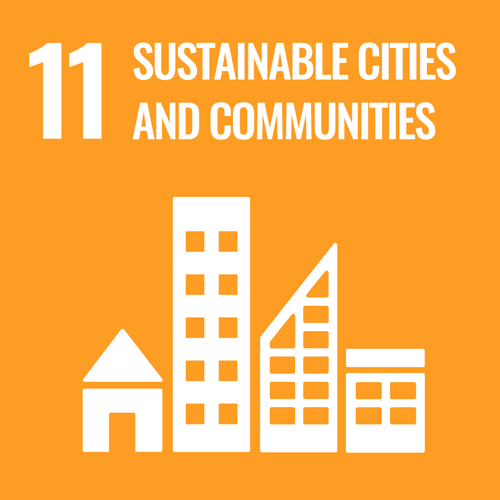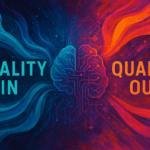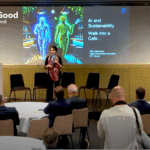At this year’s Global Forum on Emergency Telecommunications (GET-2019) in Balaclava, Mauritius, I presented a new ITU study on how disruptive technologies such as Artificial Intelligence, the Internet of Things, Big Data, robotics and drones can be used for effective disaster management.
The study includes best practices from a range of countries including Vanuatu, India, Mexico, Japan and Colombia. Below is an excerpted version of the Executive Summary of the new report: “Disruptive technologies and their use in disaster risk reduction and management.”
Technological advancement and innovation have created new opportunities for enhancing disaster resiliency and risk reduction. Developments in disruptive technologies – such as artificial intelligence (AI), the Internet of Things (IoT), and Big Data – and innovations in such areas as robotics and drone technology are transforming many fields, including disaster risk reduction and management.
The rapid spread of supporting digital infrastructure and devices – such as wireless broadband networks, smartphones and cloud computing – has created the foundation for the application of disruptive technologies for disaster management.
An avalanche of data is being generated by sensors, closed-circuit television, smartphones, financial transactions and Internet activities, to name just a few. While many of these data are being mined by businesses for commercial purposes, Big Data analytics holds enormous potential for crisis management.
RELATED: Early warning systems are saving lives and protecting communities from floods in Zambia
Application of disruptive technologies to disaster management vary in pace, scope and impact. Social media platforms such as Facebook and Twitter have been applied in a number of events, and aerial drones and IoT are increasing in use as experience is gained and costs fall. Older technologies such as satellite imagery and seismometers are still the most important methods for detecting, monitoring and accessing disasters, and text messaging has the widest reach for communicating with the public. Big data, robots and AI remain largely experimental, and large-scale impacts will require more time and investments in skills and research.
Several recommendations have been identified that governments, relief agencies, the private sector and assistance agencies can take to maximize benefits offered by disruptive technologies:
- Systemization and standardization are needed to improve the application of technology interventions. Open standards will help to lower costs, ensure interoperability and enhance scaling. The standardization should also extend to the use of Big Data, which is currently often shrouded in opaqueness. Clear and transparent sharing protocols should be implemented, including application programming interfaces. For social media, standardized hashtags should be employed to reduce confusion among the public and magnify impacts.
- Reach of digital technologies must be factored into disaster management strategies. In respect to communications among stakeholders, this includes considering the purpose and audience. While Twitter has proven useful in crisis situations, particularly among the relief community, its penetration is relatively low among the general public. It should also be considered that some people may not want to use proprietary platforms for a number of reasons, and therefore relying on only one method may not reach all intended recipients.
- A global repository featuring information on how digital technologies are being applied for disaster management would raise awareness and understanding. Hundreds of applications of disruptive technology are underway around the world, but experiences are often buried in news articles and research reports. An information base would be useful for identifying digital interventions that have worked, who the implementers were, and other material to increase understanding about which technologies are relevant for different country circumstances and types of disasters.
- Partnerships with the private sector and academia will be critical for understanding and applying digital technologies for disaster prediction, detection, response and relief. Numerous uses of disruptive technologies are being developed by the private sector. In addition, the private sector controls significant amounts of personal information in Big Data sets, which are of immense use for the disaster community. Similarly, considerable relevant research is being undertaken by the academic community.
- Scaling disruptive technologiesfor crisis is essential to have widespread impact and lower deployment costs. To date, many interventions are still pilots or carried out in an ad hoc informal manner. Processes should exist to identify relevant use cases and scale them. Given the vast potential of disruptive technologies for disaster management under a huge variety of different circumstances, there is a need to nurture innovation. This is particularly relevant given the wide country contexts around the world, different types of disasters and crisis phases. Examples from the start-up world are relevant where incubators, labs, competitions, and venture capital are used to discover, mentor and scale up promising innovations.
- Training is indispensable for the disaster community to understand how to properly and responsibly deploy new and emerging digital technologies in crisis settings. Manuals are needed for different technologies. For example, in the case of social media, this would cover hashtag guidelines, usage by public and relief organizations, coping with fake information, etc. Exchanges should be arranged for disaster management personnel to gain experience using new tools.
- Legal ramifications of technological research and interventions for disasters need to be understood. This is fairly straightforward in respect to specific regulations, such as registration and regulation of drones, but more nebulous regarding data protection and privacy. One relevant dilemma is whether the lack of data protection and privacy laws inhibits or encourages technologies that make heavy use of personal information. Further, while Big Data may eventually be forthcoming, in the event of a disaster it is needed immediately, so it is essential to have data access and sharing protocols in place beforehand. The disaster community has developed codes of conduct in certain areas that can help when laws are vague.
- Adequate capacity remains fundamental for properly planning and deploying relevant digital technologies. While digital technologies show great promise for all phases of disasters, on the viii ground, planning, management and operations are critical to their success. Disaster agencies do not need to be experts in digital technologies, but they do need to understand enough about them to develop proactive blueprints for deploying them. Disaster agencies might also consider creating a chief technologist post to better understand how to apply disruptive technologies.
The Global Forum on Emergency Telecommunications (GET-19) takes place from 6 to 8 March in Balaclava, Mauritius.















